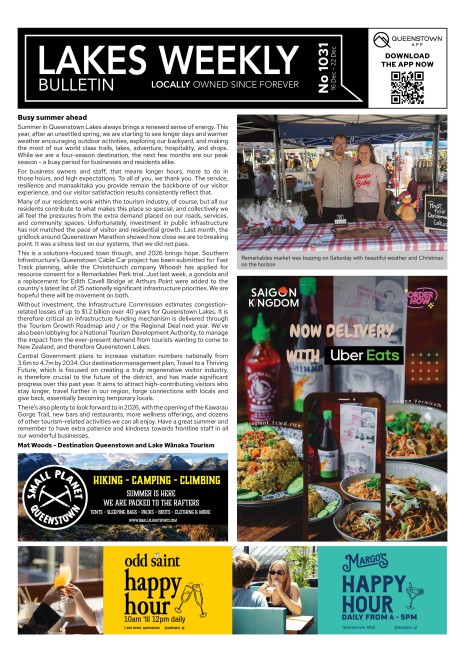Joseph Mooney - MP for Southland

Some big news out of Wellington last week, which presents a big opportunity for Queenstown and the wider region.
The Government has introduced a new framework for establishing Regional Deals, aiming to address New Zealand’s infrastructure deficit and drive economic growth.
The country faces significant infrastructure challenges, including deteriorating water pipes, failing roads, and a housing shortage. With a growing population, there is an urgent need for long-term infrastructure development in and around Queenstown.
Regional Deals will foster collaboration between central and local governments. Drawing from successful models in the UK and Australia, these deals are designed to enhance coordination, support economic growth, and improve infrastructure and housing supply. They will facilitate joint investment and enable regions to use various funding tools for infrastructure projects.
The rollout of Regional Deals will be gradual, starting with up to five regions invited to submit basic proposals. Councils are expected to keep proposals cost-effective, avoiding extravagant expenditures on presentations. New Zealand’s first Regional Deal is anticipated to be finalised by 2025.
In conjunction with these efforts, the economy is showing signs of recovery.
The Reserve Bank’s recent cut in the Official Cash Rate (OCR) to 5.25% provides relief for families and businesses. After enduring a severe cost-of-living crisis since mid-2021, marked by high mortgage repayments and low confidence, this reduction signals improved control over inflation and an end to extreme price increases.
Lower interest rates on mortgages and credit cards, combined with recent tax relief, will ease living costs further.
The Government is committed to reducing wasteful spending and focusing on essential services and infrastructure. Councils are being urged to adopt a similar approach by prioritising core services such as waste management, water infrastructure, and road maintenance.
Supporting this shift, the Government’s Local Water Done Well policy will help councils manage water debt through new Council Controlled Organisations.
A review of regulations that impose costs on councils is underway, including traffic management, which requires reform. These changes aim to alleviate financial pressures on local governments, enhancing their ability to deliver essential services.
Regional economic indicators are positive, with Southland and Otago recently identified as the fastest-growing regions in the country by ASB. This recovery is expected to boost business investment and growth, signalling a hopeful future for New Zealand’s economy which our region looks set to star in.
For Queenstown, I’m sure most locals will agree the quicker things get moving the better.








